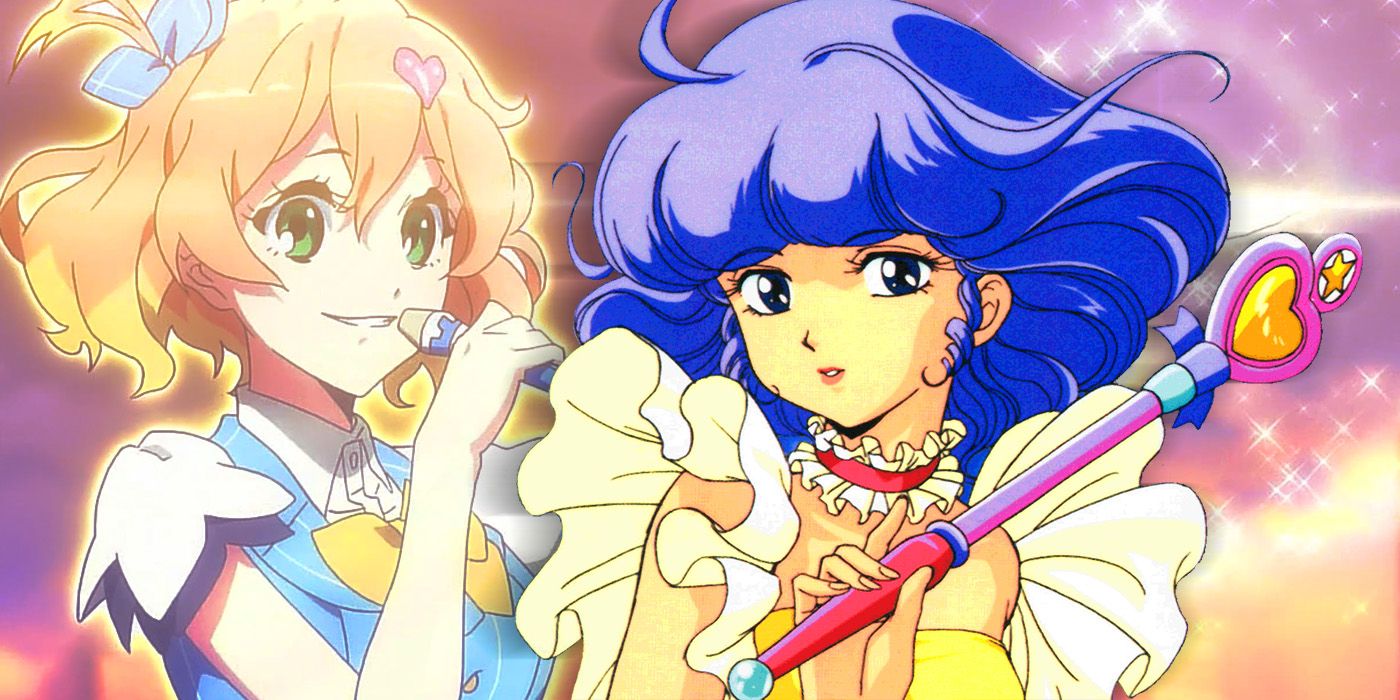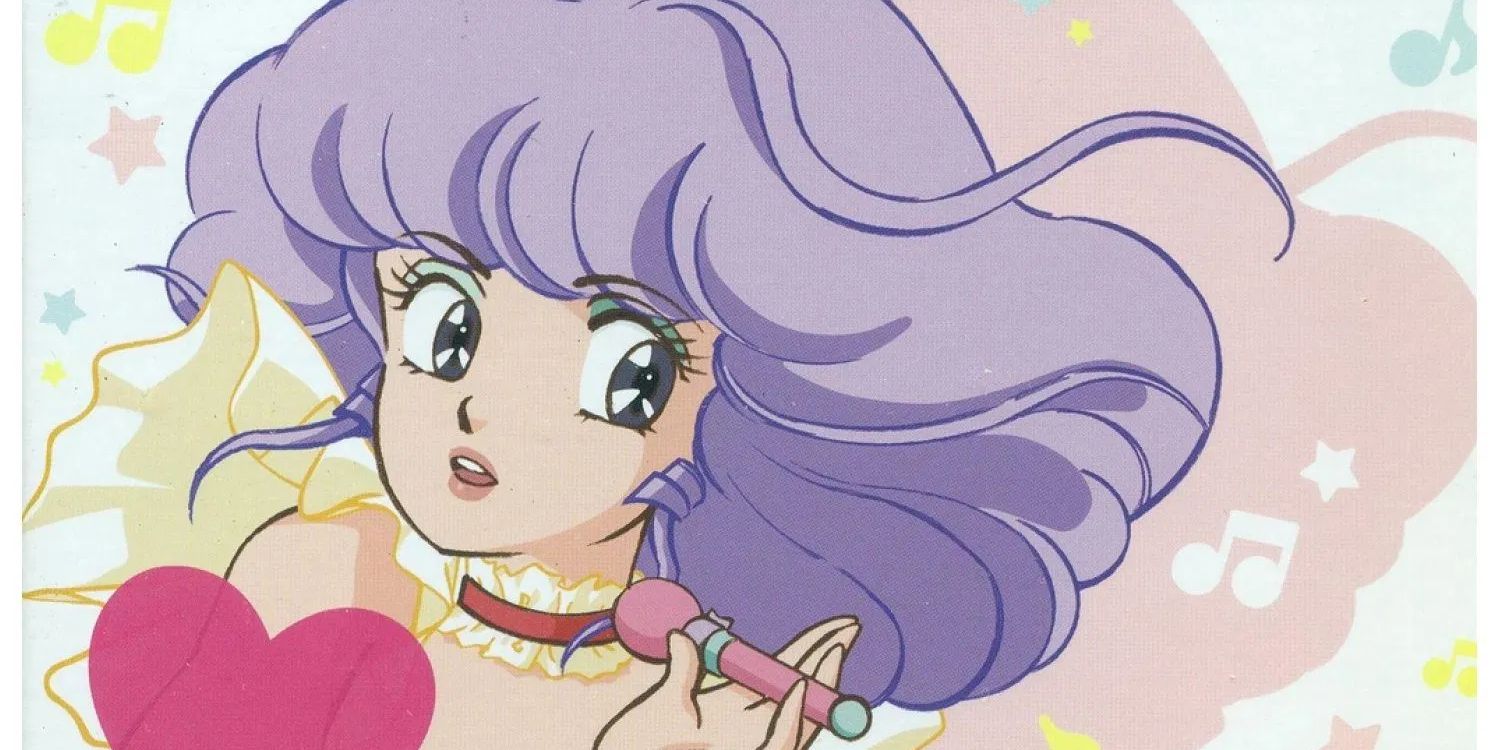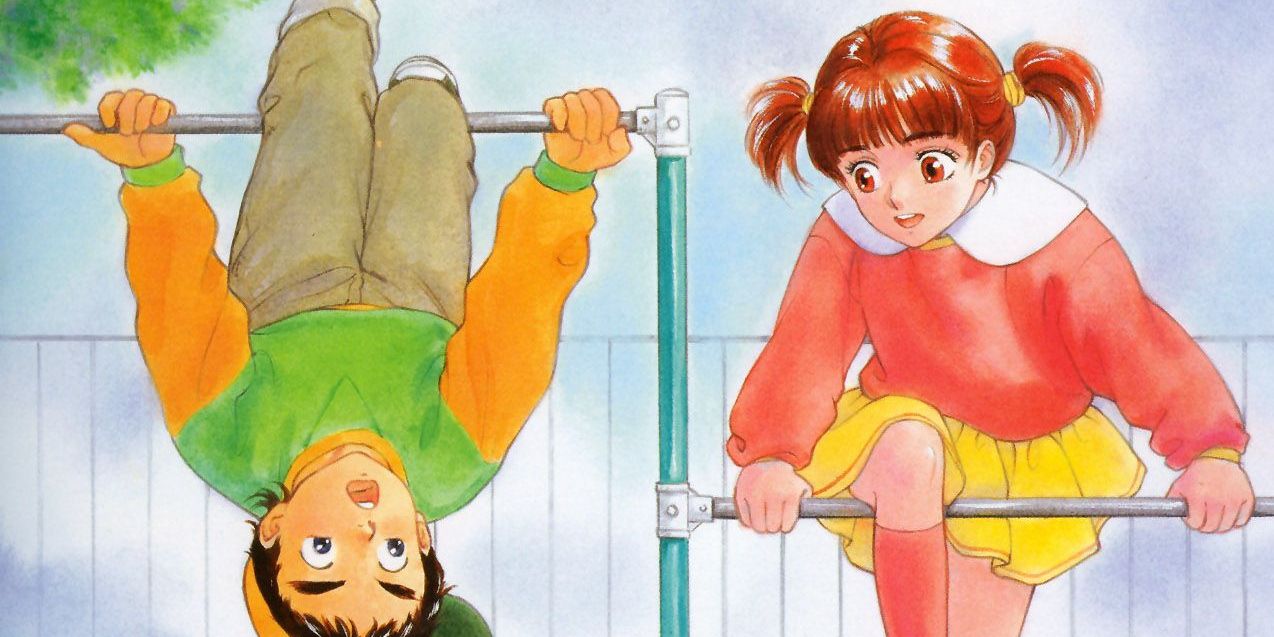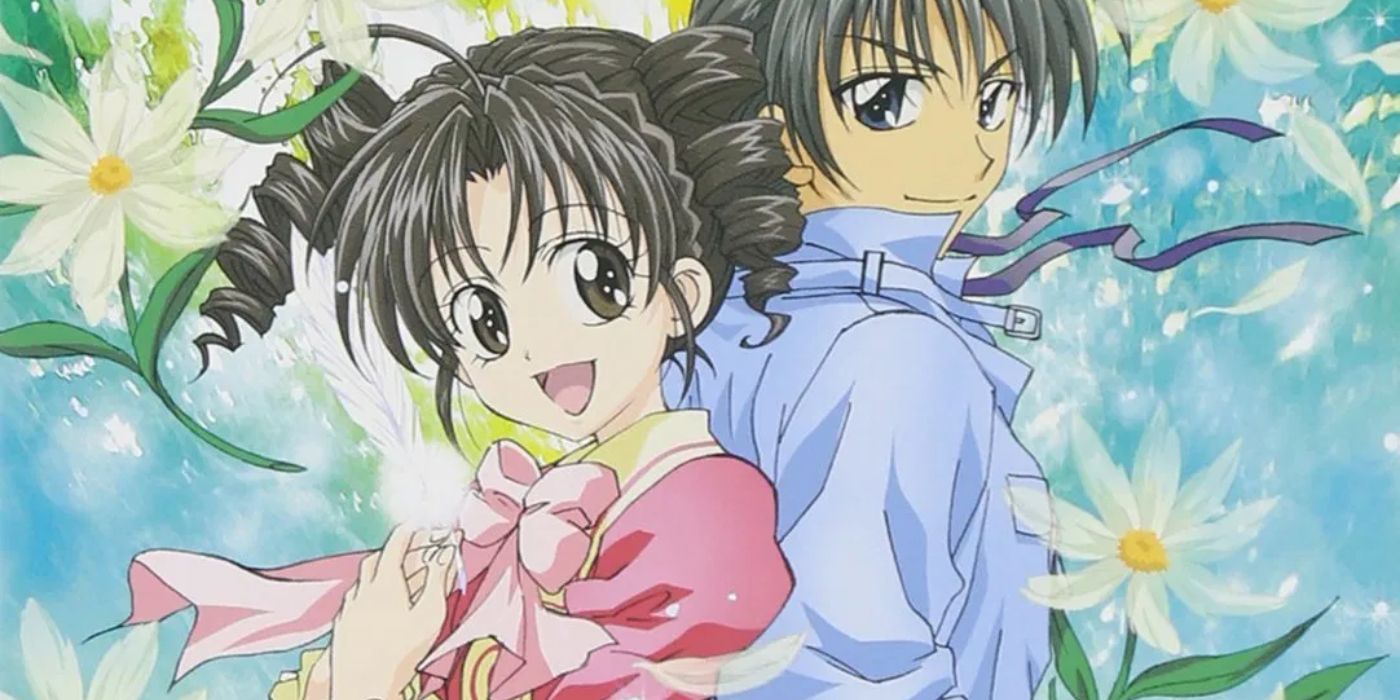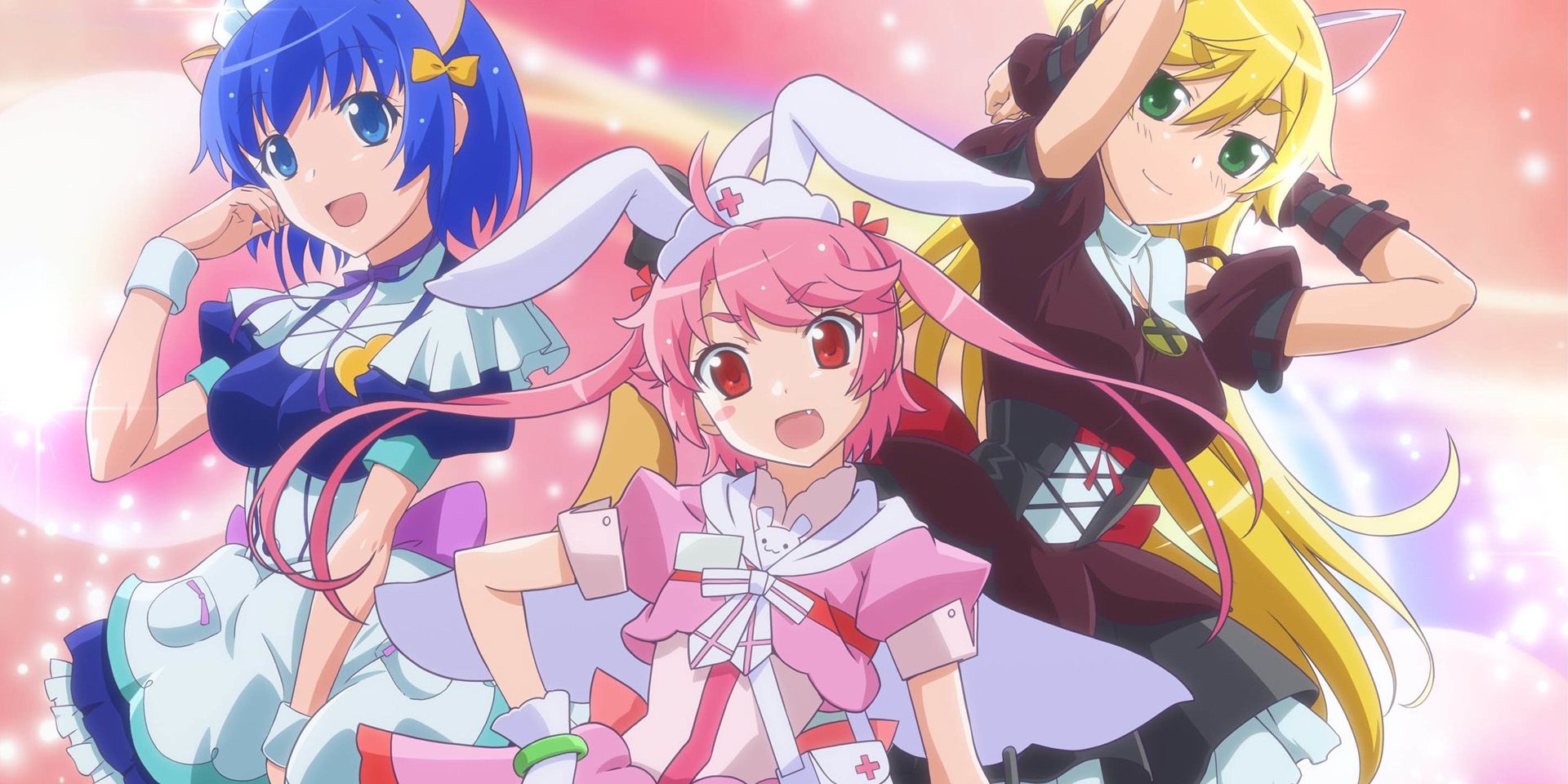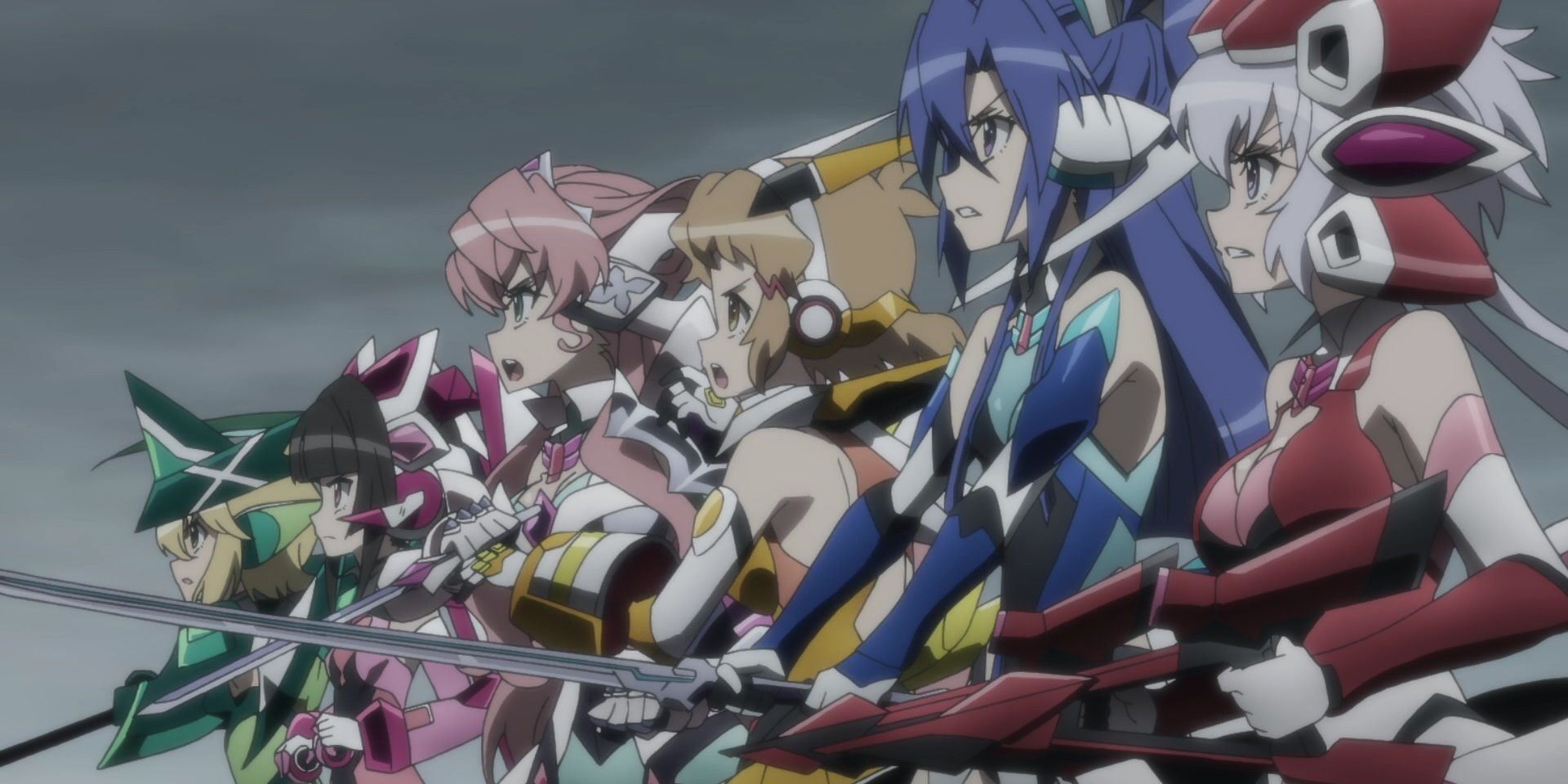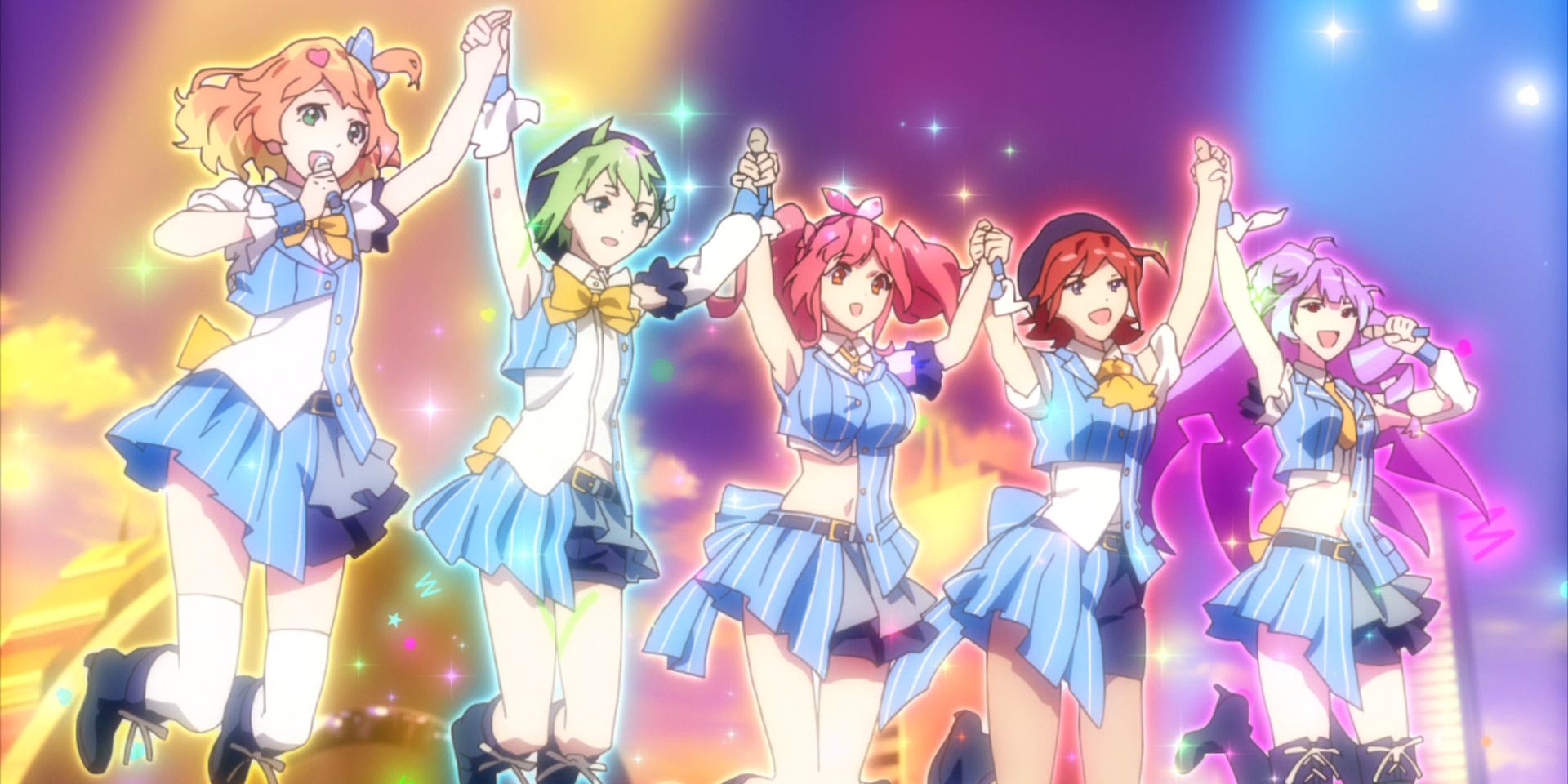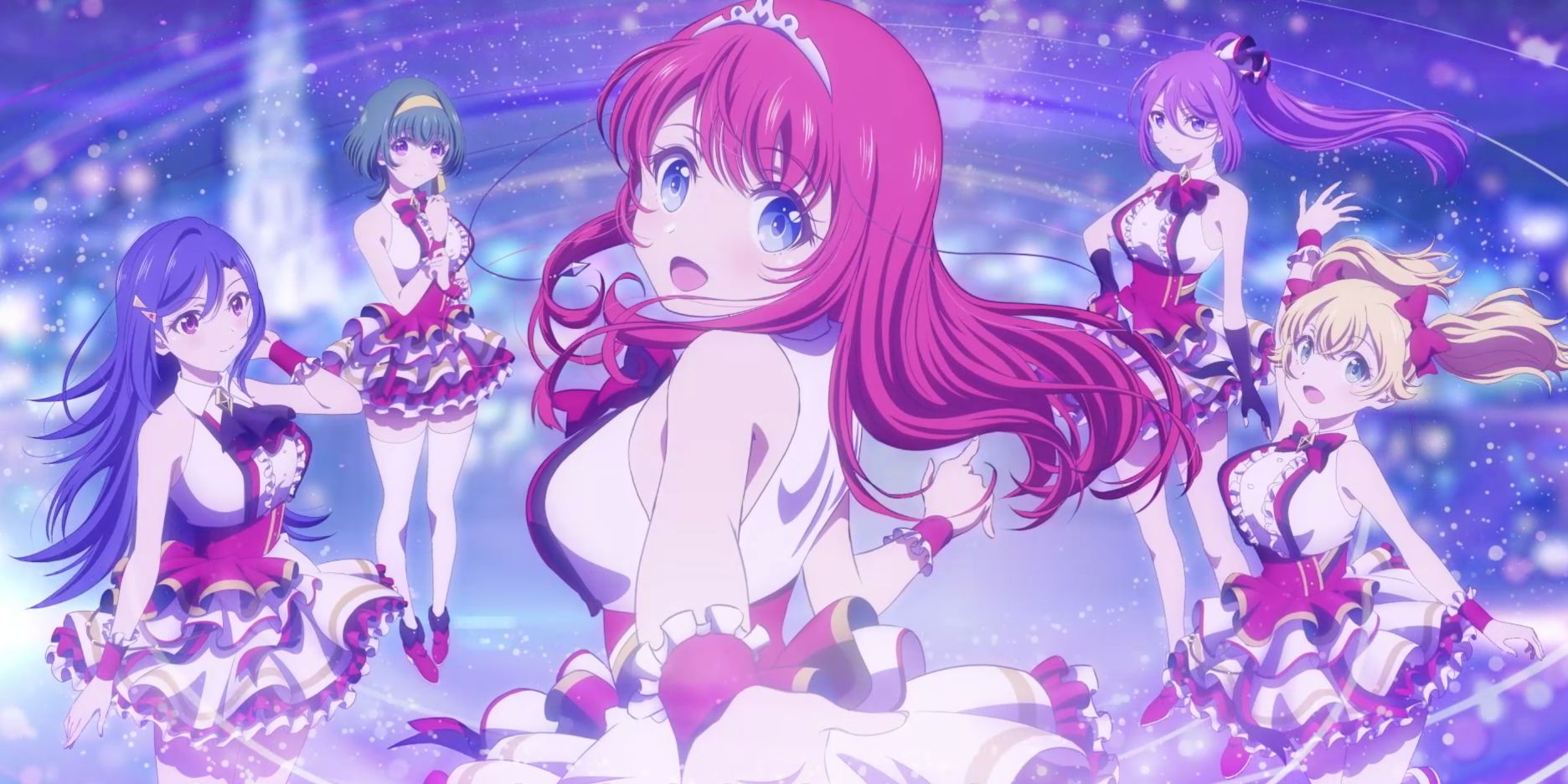Magical girl and idol series have long been a staple in anime. The first magical girl anime series aired in 1966 with Sally the Witch, followed up by The Secrets of Akko-chan in 1969. Idol anime arrived during the idol boom of the '70s with Nozomi in the Sun in 1971 and Pink Lady Monogatari in 1978. It didn't take long for these two genres to combine. The magical girl idol genre has continued to evolve over time since its introduction in the '80s.
Let's take a look back at the origins of this genre mashup and how it presents itself currently. Note this list is about anime primarily focused on the mashup of magical girls and idols, as opposed to series that only tangentially feature magical girl idols like Sailor Moon Sailor Stars or multiple Pretty Cure series.
Creamy Mami, the Magical Angel (1983-1984)
The genesis of the magical girl idol anime genre begins with Creamy Mami. A series by Studio Pierrot, Creamy Mami follows Yū Morisawa, a 10-year-old girl given a magic wand that transforms her into a 16-year-old girl for one year. In this new form, she wanders on to television and is asked to sing and fill in for the absent star Megumi Ayase. Due to her newly acquired magic powers, she accomplishes this task tremendously well, acquiring the alias Creamy Mami and starting her career at Parthenon Productions.
Not only is Creamy Mami a pioneer of this genre, but it is also a pioneer of mixed media marketing in anime. This series was used to promote the real idol singer Takako Ōta, who voiced Creamy Mami. This wasn't the first usage of an anime promoting a singer, as Pink Lady Monogatari (1978) also used this strategy, but Creamy Mami helped popularize this mixed media strategy.
Fancy LaLa, the Magic Stage (1998)
Similarly to Creamy Mami, Fancy Lala centers on a young girl given the power to transform into a teenage version of herself who is scouted by a talent agency to become an idol. That wasn't the only power nine-year-old Miho Shinohara was given; she also has a magic sketchbook and pen that allows her to bring drawings to life. Miho's dream is to draw manga as a living, but as her teenage self whom she names Fancy Lala, she decides to join the Lyrical Productions agency and become a star in secret.
Likely due to Cardcaptor Sakura airing the same year, Fancy Lala didn't receive that much recognition, but it influenced future series like Full Moon o Sagashite.
Full Moon o Sagashite (2002-2003)
Full Moon stars Mitsuki Koyama, a 12-year-old girl who wants to become a singer so that she can reunite with her childhood crush, Eichi. Mitsuki has a lot of obstacles to go through to accomplish this dream though, as she learns she has throat cancer. While in distraught, Mitsuki is informed by two shinigami that she only has one year left to live, thus she makes a deal with them: if they help her become a singer than she will leave the world with no regrets. With that promise, the shinigami Takuto gives her the ability to transform into a 16-year-old girl so she can accomplish her dream, thus starting the journey of Mitsuki's idol alias Full Moon.
As opposed to episodic storytelling, Full Moon follows a more streamlined dramatic plot. The anime aired while the manga was still ongoing, so the plot of the anime diverges from the manga with an original ending.
Nurse Witch Komugi (2002-2004, 2016)
Nurse Witch Komugi offered a parodic take on the genre. The story is a spinoff of The SoulTaker series. It follows cosplay idol Komugi Nakahara who transforms into a Magical Nurse Witch to fix problems she mostly causes. Littered with slapstick comedy and fanservice, the series also received a reboot in 2016 titled Nurse Witch Komugi-chan R. In this series, Komugi must juggle being an idol, student and magical girl as she is reluctantly given powers to use against masked enemies.
Symphogear (2012-2019)
Symphogear combines magical girls, idols and some serious action-packed fights to deliver one hell of a mixed-media franchise. The show begins with the main character Hibiki Tachibana watching her favorite idols Tsubasa Kazanari and Kanade Amō's concert. The exciting performance is soon met with tragedy as the alien race known as Noise starts destroying the stadium and killing the audience. The idols must use their armor, known as Symphogear, to battle against the Noise with the power of music and save the planet from destruction.
Symphogear doesn't follow the light-hearted comedy-drama of past magical girl idol series. Instead, its focus is entirely on some of the most over-the-top battles in anime, as each of the Symphogear sing their hearts out to defeat the Noise, all while beating them and other evil masterminds up with crazy power-ups. The series has a manga adaptation, mobile game and live concerts where fans can listen to the voice actresses sing their hearts out.
Macross Delta (2016)
The Macross series is no stranger to using idols and the power of song as a weapon. However, Macross Delta takes this a step further, making the idol group Walkure into a full-fledged magical girl team complete with transformation sequences. Like Symphogear, Walkure uses their songs for battle, but instead of trying to inflict damage upon their foes, they try to calm and heal them of the Vár Syndrome, a disease-causing people to go berserk.
Macross's evolution from focusing on a singular idol to a group was expected, as both idol groups and magical girl teams have grown more popular. Like Symphogear, Macross Delta also had real world concerts with the voice actresses performing songs from the series.
Lapis: ReLiGHTs (2020)
The currently-airing Lapis Re:LiGHTs already has a smartphone game, manga adaptation and live events in addition to the anime. The story follows a girl named Tiara, whose dream is to join a prestigious witch academy. She is able to enter the academy so long as she is in her childhood friend Rosetta's group, but, there's a catch. Everyone in her group is failing, and if one of them fails that semester, they all get expelled, including Tiara.
Its idol aspect is introduced in the form of Orchestras, singers who convert audience excitement into mana for the city to use as an energy source. The series provides an interesting take on the magical girl idol genre, mixing slice-of-life, comedy and musical performances together while also commenting on music's effect on a community.

